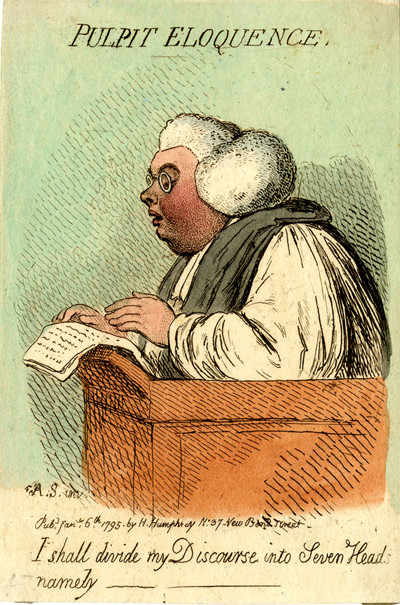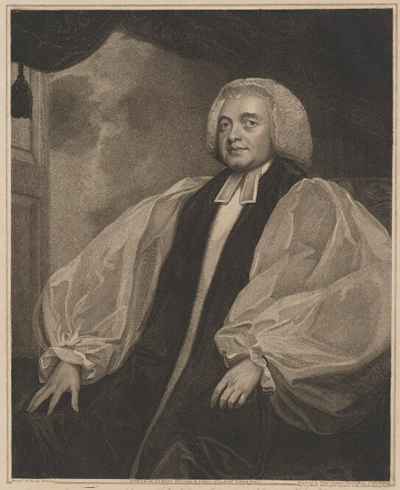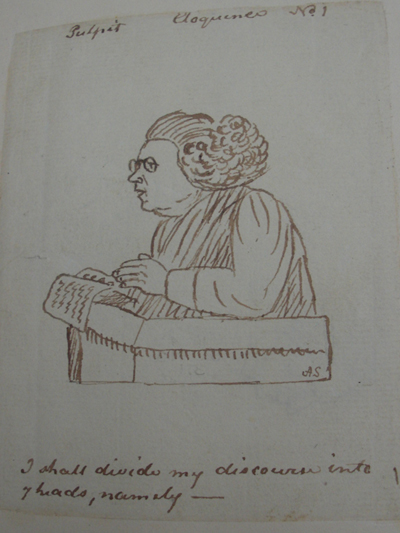Pulpit Eloquence
Pulpit Eloquence is one of a series of caricatured portraits (all listed as being published on January 6th, 1795) illustrating eight kinds of eloquence, and sometimes associated with particular, real-life individuals. For more about the series as a whole, see my Overview.

© Trustees of the British Museum
The British Museum identifies this as a portrait of the Archbishop of Canterbury, John Moore. But apart from his clerical garb, it's hard to see any resemblance to the formal portrait of Archbishop Moore by John Jones after the painting by George Romney. Indeed Gillray's version has emphasized rotundity in his hair, glasses, face, chin, shoulder, and arm, making him look less like the sketch he received from AS and more like countless overstuffed prelates that caricaturists made a living on satirizing throughout the 18th century.

John Moore, Archbishop of Canterbury
[Feb. 1, 1792]
© National Portrait Gallery, London
The example of pulpit eloquence provided ("I shall divide My Discourse into Seven Heads") is similarly generic; there is nothing to tie it to the Archbishop or to any specific prelate. But it is consistent with satires of clerical sermons like Hogarth's Sleepy Congregation where a single minded focus on the text (with all its heads) and a complete indifference to the audience result in sleep for most of the parishioners. In this instance, the fat cleric with his eyes cast down, seems almost to have put himself asleep.

Pulpit Eloquence Drawing
[December 1794?]
© Trustees of the British Museum
© Photo by Jim Sherry
Comparing Gillray's print with the drawing provided by AS (Collings), one can see how much fuller and richer Gillray has made it. Not only is the figure immensely more vital, but picking up on the latent implication that the sermon is likely to be long and solemn, he has brought out a humor that's missing from Collings' flatter and more earnest rendition.
Sources and Reading
- Commentary from the British Museum on Pulpit Eloquence.
- "Samuel Collings," Wikipedia
- "Annibal Scratch," Wikipedia
- "title," Wikipedia
- "title," Wikipedia
Comments & Corrections
NOTE: Comments and/or corrections are always appreciated. To make that easier, I have included a form below that you can use. I promise never to share any of the info provided without your express permission.